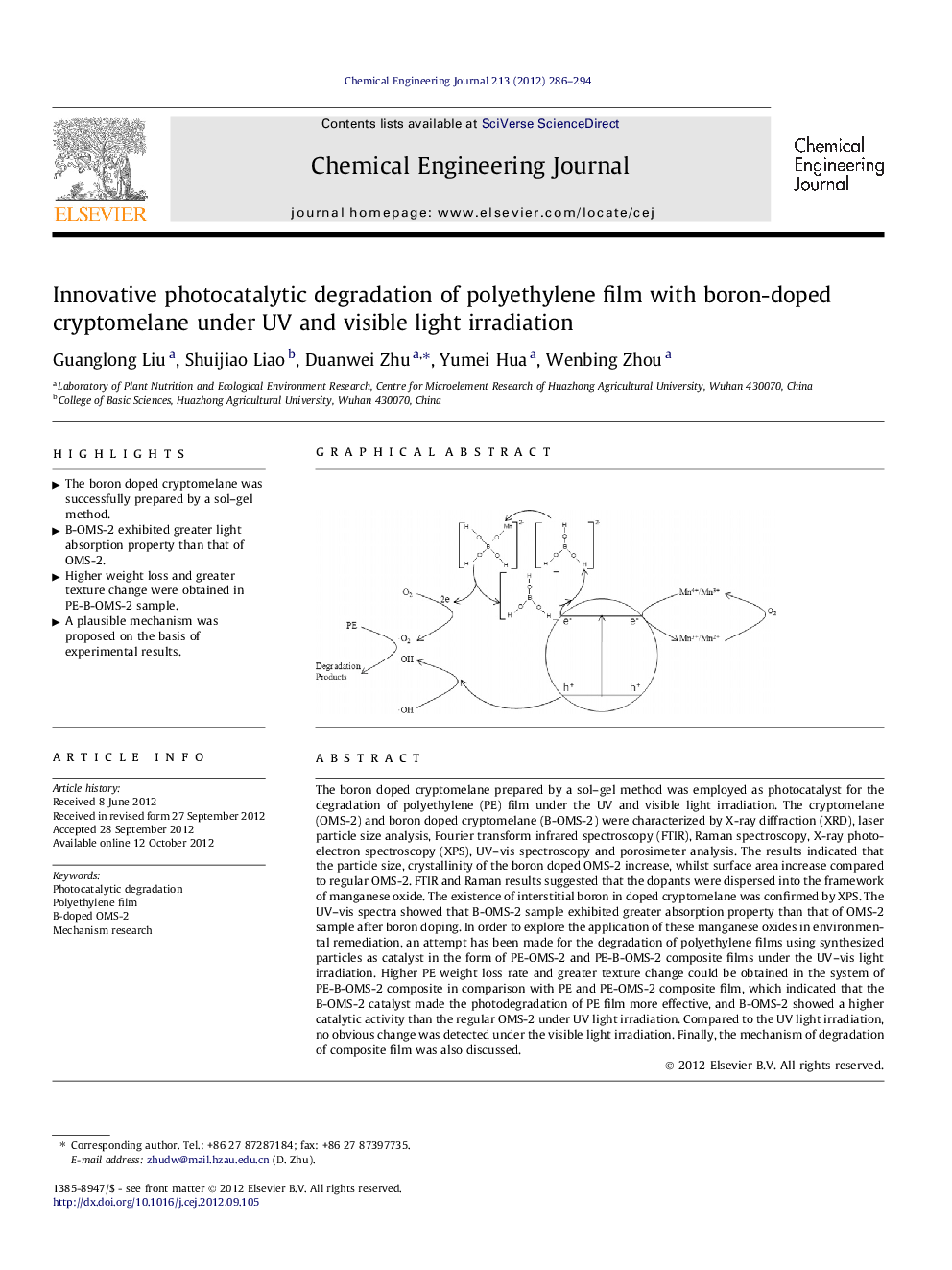| Article ID | Journal | Published Year | Pages | File Type |
|---|---|---|---|---|
| 149105 | Chemical Engineering Journal | 2012 | 9 Pages |
The boron doped cryptomelane prepared by a sol–gel method was employed as photocatalyst for the degradation of polyethylene (PE) film under the UV and visible light irradiation. The cryptomelane (OMS-2) and boron doped cryptomelane (B-OMS-2) were characterized by X-ray diffraction (XRD), laser particle size analysis, Fourier transform infrared spectroscopy (FTIR), Raman spectroscopy, X-ray photoelectron spectroscopy (XPS), UV–vis spectroscopy and porosimeter analysis. The results indicated that the particle size, crystallinity of the boron doped OMS-2 increase, whilst surface area increase compared to regular OMS-2. FTIR and Raman results suggested that the dopants were dispersed into the framework of manganese oxide. The existence of interstitial boron in doped cryptomelane was confirmed by XPS. The UV–vis spectra showed that B-OMS-2 sample exhibited greater absorption property than that of OMS-2 sample after boron doping. In order to explore the application of these manganese oxides in environmental remediation, an attempt has been made for the degradation of polyethylene films using synthesized particles as catalyst in the form of PE-OMS-2 and PE-B-OMS-2 composite films under the UV–vis light irradiation. Higher PE weight loss rate and greater texture change could be obtained in the system of PE-B-OMS-2 composite in comparison with PE and PE-OMS-2 composite film, which indicated that the B-OMS-2 catalyst made the photodegradation of PE film more effective, and B-OMS-2 showed a higher catalytic activity than the regular OMS-2 under UV light irradiation. Compared to the UV light irradiation, no obvious change was detected under the visible light irradiation. Finally, the mechanism of degradation of composite film was also discussed.
Graphical abstractFigure optionsDownload full-size imageDownload as PowerPoint slideHighlights► The boron doped cryptomelane was successfully prepared by a sol–gel method. ► B-OMS-2 exhibited greater light absorption property than that of OMS-2. ► Higher weight loss and greater texture change were obtained in PE-B-OMS-2 sample. ► A plausible mechanism was proposed on the basis of experimental results.
